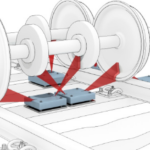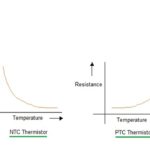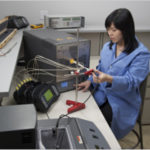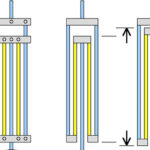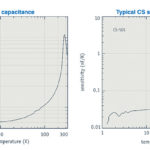Temperature is the most commonly measured physical quantity. Thermometry, the measurement of temperature, involves a wide range of technologies. Its uses range from maintaining a comfortable and safe environment for people to industrial processes operating at over 3,000 °C and quantum computing operating at near absolute zero.
This FAQ reviews some of the more common ways to measure temperature.
Fluid-expansion
Mercury thermometers were once the most common thermometry instrument. However, except for some specialized applications, organic materials like industrial alcohols have displaced mercury. Industrial fluid-expansion thermometers consist of a measurement probe, connected by a stem to a pressure bulb and display (Figure 1). The display contains a bourdon tube measuring system that’s inexpensive and provides good repeatability. These thermometers don’t require a power source, simplifying installation.
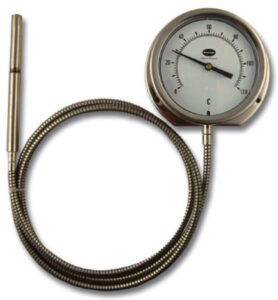
Thermocouples
Thermocouples use two dissimilar metals to form a junction where an induced voltage occurs in response to changes in temperature because of the Seebeck effect. Thermocouples don’t usually have a linear response to temperature changes and require active circuitry to translate the voltage changes into a temperature reading. Like a fluid-expansion thermometer, thermocouples don’t need an external power source and are relatively simple to install but have limited accuracy. Thermocouples can measure wider temperature ranges than liquid-expansion devices. They can be packaged for use in high-temperature applications like kilns and for challenging environments like immersion in acids and other aggressive chemicals.
Resistance temperature devices
There are two technologies used to make resistance temperature devices (RTDs), metals, and thermistors. Metallic RTDs consist of fine wires made using platinum (Pt), nickel (Ni), or copper (Cu) that have a known resistance/temperature (r/t) relationship. Platinum RTDs are most common in industrial electronics since they have the most stable r/t relationship over the largest temperature range (from 0 to 500 °C), and they are the most environmentally rugged. Thermocouples and Pt RTDs have been developed for monitoring cryogenic temperatures in quantum computers, high-energy physics labs, and similar applications.
Thermistors are semiconductor devices whose resistance changes with temperature. There are two basic types of thermistors, negative temperature coefficient (NTC) and positive temperature coefficient (PTC) devices. For NTCs, an increase in temperature results in a resistance decrease, and for PTCs, when the temperature increases, so does the resistance. NTCs and PTCs are used as temperature sensors in a variety of applications and for temperature regulation in industrial consumer, medical, and other equipment. NTCs are also used to provide inrush current limiting in power conversion applications while PTCs are used to provide resettable overcurrent protection in electronic systems.
Infrared
Infrared (IR) temperature sensors are non-contact devices. They detect IR radiation coming from the item being monitored. IR detectors can provide spot measurements of a precise location or can be used in a matrix to provide a snapshot of the temperatures over a larger area. As a non-contact technology, IR temperature sensors can be used remotely from the item being monitored and can also be used to monitor extremely high temperatures over 3,000 °C (Figure 2).
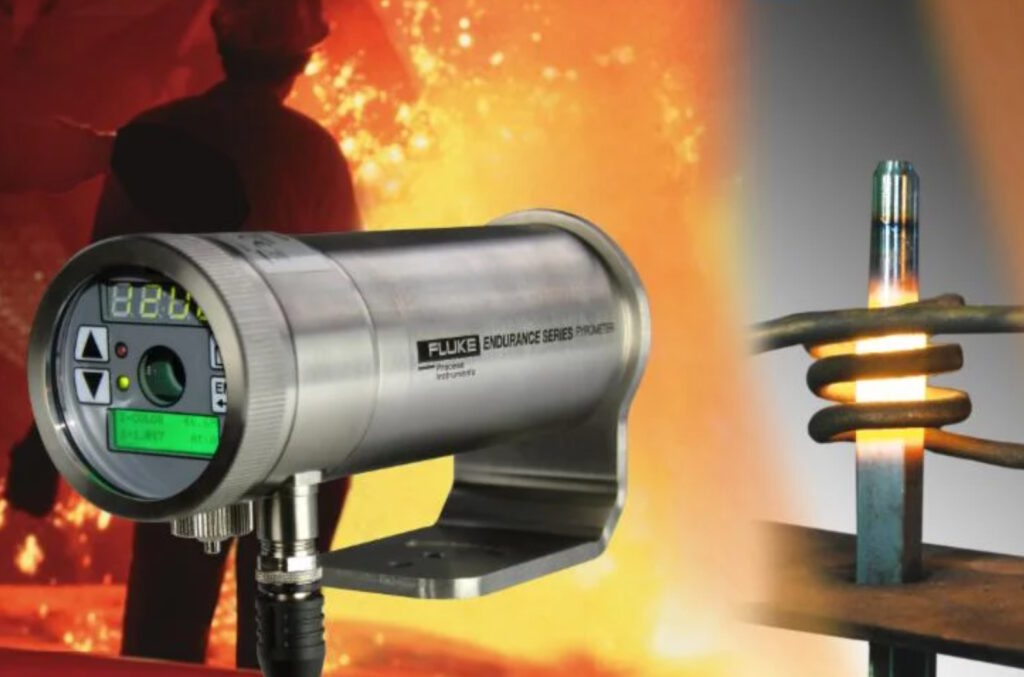
Bimetallic
As the name implies, bimetallic temperature sensors use two metals. The metals have different thermal coefficients of expansion, and when strips of the two metals are bonded together, the structure bends in response to temperature changes. Bimetallic temperature sensors are robust, low cost and don’t require a power source. However, they usually have a limited operating temperature range and are not suited for measuring very low temperatures, and they can require frequent recalibration, especially in high shock and vibration applications.
Change-of-state
Change-of-state temperature sensors are based on materials like certain lacquers and other marker materials, pellets, and liquid crystals that experience a change in appearance at a predetermined temperature. Sensors based on lacquers, markers and pellets experience an irreversible change, so the operator does not need to be continually monitoring the equipment. They are used for monitoring spot temperatures on industrial equipment, or monitoring the temperature of materials in transit and alert operators if a trigger temperature has been reached. Liquid-crystal-based temperature measuring strips can be designed to monitor a specific temperature range of interest and consist of a series of bars that enable the temperature to be estimated, not precisely measured (Figure 3).

Summary
As shown, many technologies have been developed for measuring and monitoring temperature. They are used across a wide range of applications from consumer devices to industrial systems and quantum computers. Some passive devices have been developed to monitor the temperature of materials like foods and medicines in transit to ensure they don’t exceed safe storage temperatures.
References
7 Basic Types of Temperature Measuring Sensors, Wastewater Digest
Component temperature measurement, XP Power
Introduction to Temperature Measurement, Omega Engineering
Liquid expansion – what does this mean & why is it used?, Brannan
Measuring Temperatures Precisely, HBK
Resistance Temperature Sensors for High Energy Physics Applications, Lake Shore Cryotronics

